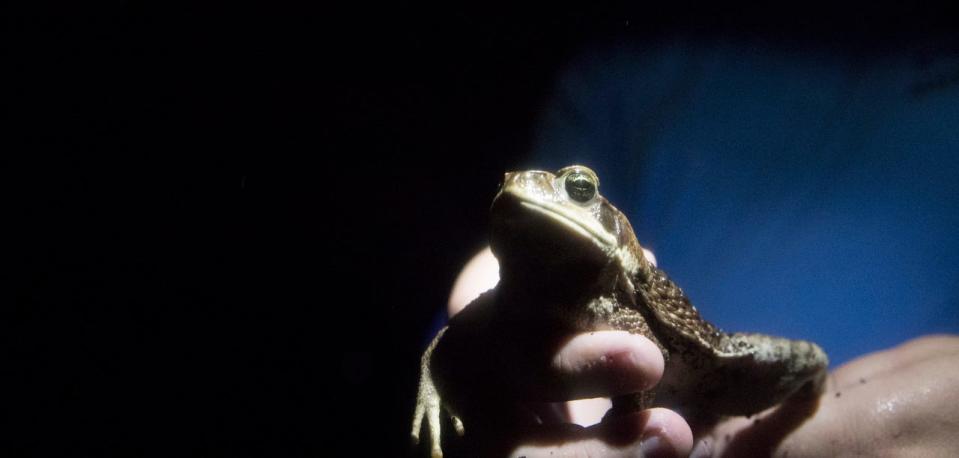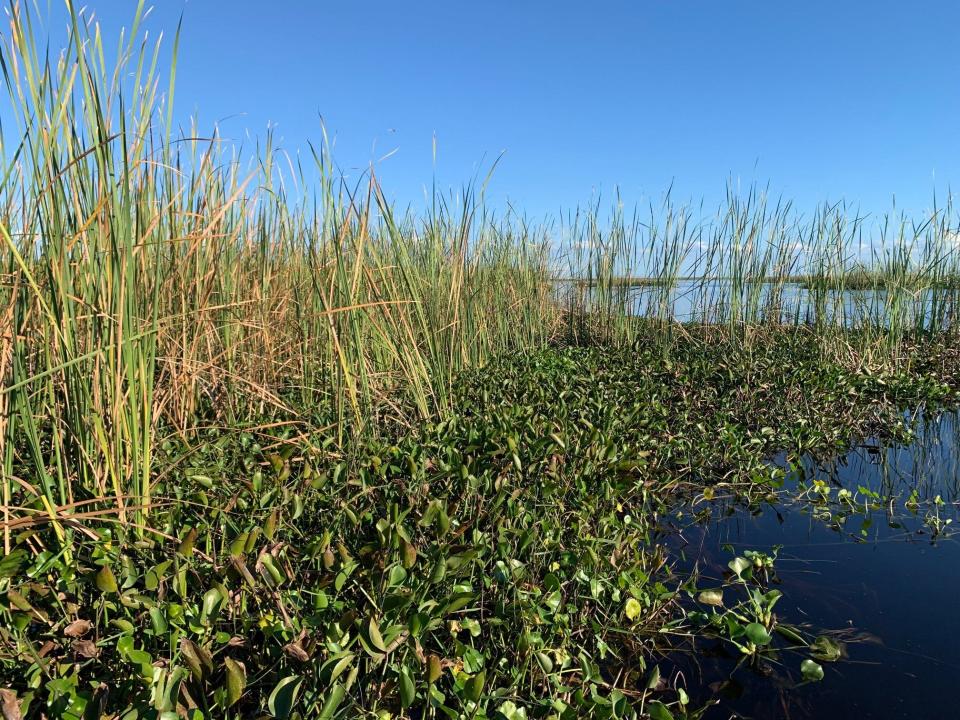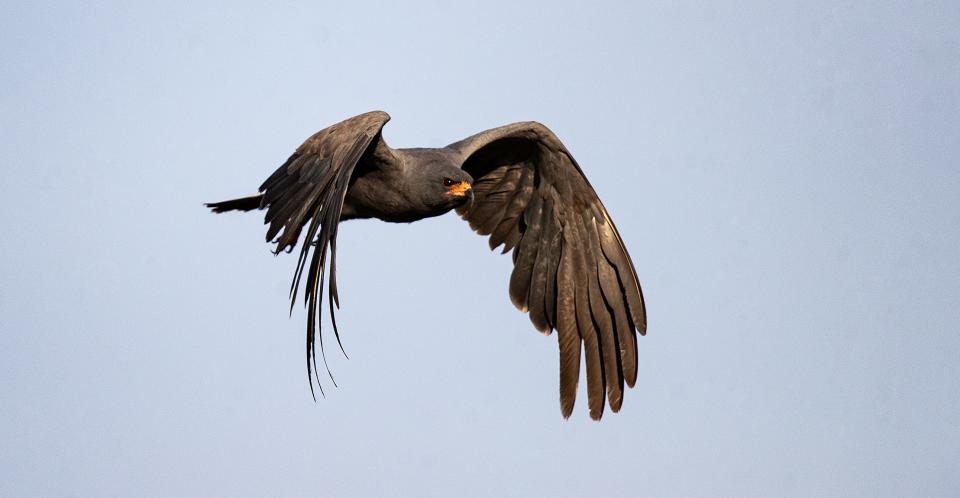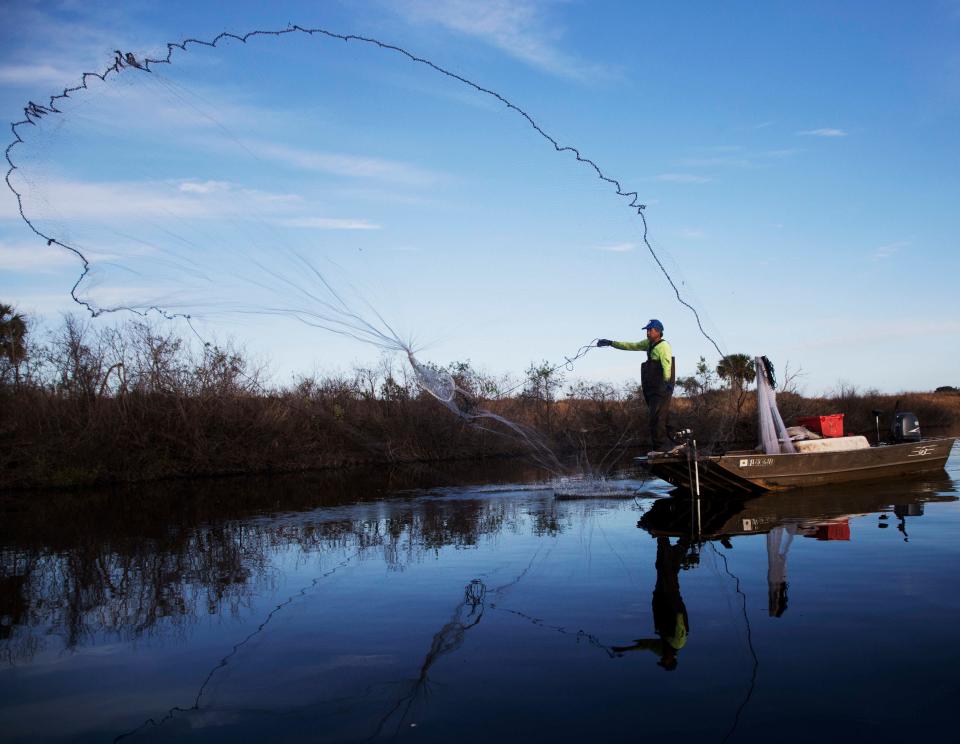Invasive species, helped by Hurricane Ian, have expanded their range in Florida: USGS
Hurricane Ian smashed Southwest Florida nearly a year ago, and the region hasn't been the same since.
And the impacts extend beyond the obvious human tolls as the storm likely pushed dozens of invasive species into new areas of Southwest Florida, according to a United State Geological Survey, or USGS, report released last week.
So, dreadful critters like the poisonous cane toad now have a much broader range, new areas to torment and haunt.
Plants that have clogged waterways and choked off access to native species are flourishing in new places, further putting a clamp on native wildlife.
"When invasive species spread into new areas, there can be environmental, economic and human health effects that can cost the U.S. billions of dollars," a USGS website reads. "Due to the importance of the issue, farmers, ranchers, businesses, and Tribal and government officials are working to mitigate the threats these invaders pose."
The Fort Myers-Cape Coral area was already a hotspot for invasive species. Now those species have been flushed out to new areas and relatively pristine areas ― like Charlotte Harbor, Ten Thousand Islands and Everglades National Park.
Cane toad expansion
The infamous cane toad was pushed into some of Southwest Florida’s most pristine preserves.
Imported by the agriculture industry in the 1950s with the hopes of eradicating pests, cane taoads have spread from the fields and into urban areas.

Now they’re likely in the Florida Panther National Wildlife Preserve, the Ten Thousand Islands National Preserve, the Big Cypress National preserve and Everglades National Park.
Water hyacinth on the move
It's not just fish and reptiles that have an expanded range post-Ian.
Many plants, as well, were carried from their former range and into new territory.

Water hyacinth is one of the most prolific and damaging invasive plants in Florida, and the USGS report shows the plant moving into Sanibel and Charlotte Harbor and south and into Ten Thousand Islands National Wildlife Refuge and coastal Everglades National Park.
Apple snails … and when invasive species help
An invasive apple snail was already established in much of the Caloosahatchee watershed, Cape Coral, North Fort Myers, Estero Bay and Bonita Springs. But Hurricane Ian may have pushed the invasive species up into Charlotte Harbor, to Sanibel and south toward Naples.
The storm was so powerful it may have pushed the snails all the way to Lake Okeechobee, according to the report.
Invasive apple snails, though, can be a good food source for the endangered Everglades snail kite.

These kites feed on native apple snails, which have declined greatly in recent decades.
The invasive snail is so prolific that it's helped grow snail kite numbers, making it an odd ally on the road to recovery.
Look out for armored catfish
The dreaded armored catfish has been found in downtown Fort Myers, on Sanibel and in Bonita Springs and Naples.
Hurricane Ian likely pushed the fish into the Charlotte Harbor area, as well as the eastern portion of the Caloosahatchee River watershed.

The USGS map also shows the armored catfish, post Ian, moving down to Marco Island and further south ― to the Ten Thousand Islands National Wildlife Refuge and coastal Everglades National Park and into Florida Bay.
A walking fish?
The walking catfish, too, was likely pushed into Charlotte Harbor and toward North Port and Englewood.
It was also flushed east, to the upper, freshwater portions of the Caloosahatchee River.
More: How are Southwest Florida sea turtles doing a season after Hurricane Ian?
Walking catfish are called "walking" fish because they use their fins to shift back and forth when out of the water and on land.
The fish's movements give the appearance that it's walking, hence the name.
Connect with this reporter: Chad Gillis on Facebook.
This article originally appeared on Fort Myers News-Press: Florida invasive animals, plants increased their range after Ian

